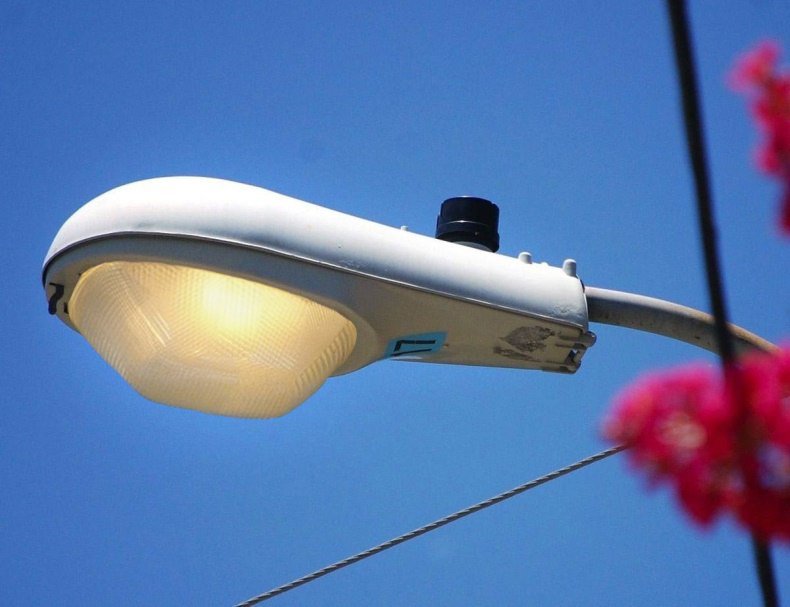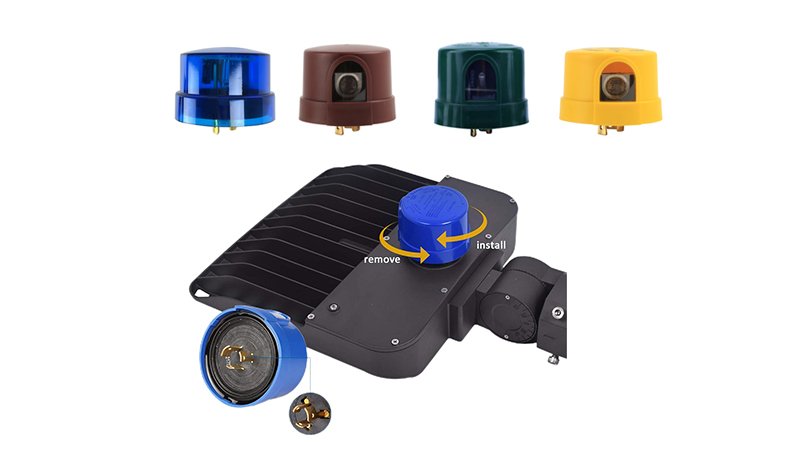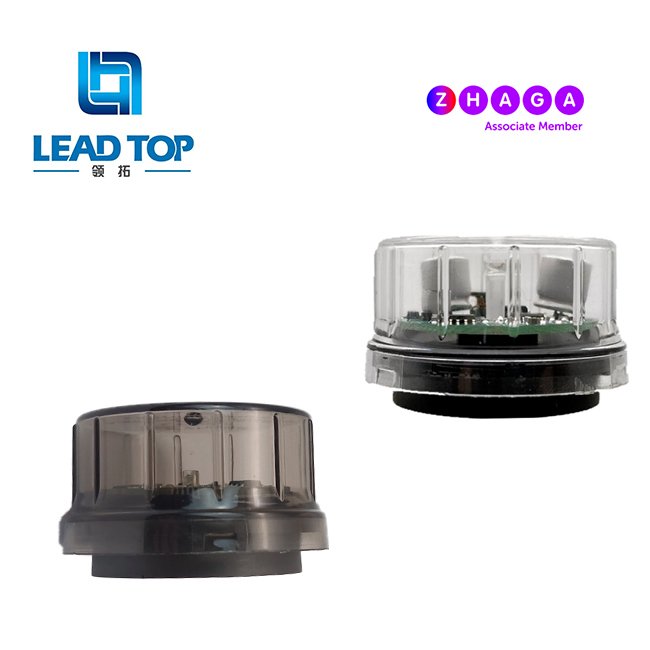If your LED streetlights or LED pole lights randomly turn on and off, you’re not alone. This frustrating issue commonly called as flickering, cycling, or phantom switching, affects outdoor lighting systems. Whether you’re managing municipal streetlights or commercial area lights, these problems not only waste energy but also compromise safety reliability.
The good news? Most of these issues are preventable. With the right photocell sensor, you can ensure your LED lights operate seamlessly, Let’s break down the most common causes and the proven solutions recommended by Lead-Top, a global manufacturer known for its high-quality dusk-to-dawn sensors and intelligent light controllers.
Photocell Sensor Feedback Loop
One of the most frequent culprit of LED lights turning on and off unexpectedly is a photocell sensor feedback loop, This happens when the photocell is installed too close to the light it controls.
Here’s what occurs: When night falls, the photocell detects low ambient light and switches the LED on. But once the LED illuminates, the photocell detects this artificial light as a rise in lux levels and mistakenly switches the light off. After darkness returns, the cycle repeats, creating an endless loop of switching.
Solution:
- Mount the photocell away from direct fixture light. Position your photocell sensor carefully, Ensure the sensor is mounted where it reads natural ambient light and is shielded from the direct glow of the fixture it controls.
- Select photocells with built-in time delay and shielding. Lead-Top models like the LT134 and LT154 feature adjustable time delays (2–10 seconds), so brief fluctuations don’t cause the light to switch unnecessarily. Their advanced shielding ensures accurate lux detection even in complex installations.
This solution is particularly important when using NEMA twist-lock photocells in street and area lighting.

Loose or Faulty Wiring
Flickering of lights can also be caused by loose wire connections, oxidized terminals, and aging lamp sockets, Outdoor lighting systems are exposed to moisture that can degrade electrical contacts over time, Loose connections lead to voltage drops, which can cause lights to switch off unexpectedly.
Solution:
- Double-check all wiring during installation inspect and secure all connections
- Make sure that wire nuts or terminal blocks are tight, clean, and dry
- Perform regular maintenance checks particularly on older installations
Good wiring practices combined with reliable components, such as Lead-Top’s IP66/IP67-rated photocells, minimize these risks.
Incompatible or Low-Load Photocell
Not all photocells are designed for LED loads. Some older or thermal types struggle to detect low wattage and can misfire or fail to hold the circuit closed.
These devices may not detect LED loads properly and can fail to keep the circuit reliably closed, leading to cycling or flickering, Older photocells were often built for high-wattage incandescent or HID lamps, When paired with low-consumption LED pole lights, they may misinterpret load signals and operate erratically.
Solution:
- Use LED-compatible photocells specifically for the low inrush and steady-state current profiles of LED lighting, Lead-Top’s LT124, LT134, and LT154 models are rated up to 8A LED loads, tested to perform consistently with modern LED drivers.
- Check your system’s total load against the photocell’s rated minimum load. Oversized photocells for tiny loads can cause detection issues.
Power Fluctuations or Long Cable Runs
LEDs are sensitive to voltage instability, especially in long-distance outdoor installations. Voltage drops, grid surges, or unbalanced loads can cause unpredictable behavior, Variations in voltage especially at installation sites with long cable runs, can trigger shutdowns.
Solution:
- Choose photocells with surge protection and zero-crossing switching (e.g., Lead-Top LT154, up to 20kV protection) making it ideal for installations exposed to lightning
- Check for cable drop and ensure stable AC input voltage for long runs.
Such preventive measures extend system life and reduce maintenance costs.
Failing or Overheating LED Driver
Sometimes the issue isn’t with the photocell sensor at all, but within the light fixture inside the luminaire itself, Overheating or degraded LED drivers can shut off intermittently, mimicking photocell failure.
Poor heat management or overloading can all contribute to driver failure.
Solution:
- Test the driver output voltage
- Use infrared thermometers or thermal cameras to monitor fixture temperature
- Replace the driver or fixture if thermal protection is triggering the shutdown
Combining robust photocells with high-quality LED drivers ensures a low-maintenance system.
Why Choose Lead-Top Photocells?
When reliability matters choosing a proven manufacturer is key, Lead-Top offers a wide range of photocell solutions, Here’s a quick look at some top models:
| Model | Type | Voltage | Features |
| LT124 | Twist-lock | 120–277V | Cost-effective, LED-ready, time delay built-in |
| LT134 | Long-life | 120–277V | Zero-crossing switching, surge protection, IP66 |
| LT154 | Heavy-duty | 120–277V | 20kV surge, Fail Mode ON, 10-year warranty |
| LT210 | Wire-in | 120–277V | Compact design, sealed relay, fast switching |
Each is compatible with standard NEMA socket installations, making maintenance simple and fast.

Lead-Top Factory Advantages
Why do municipalities and lighting OEMs choose Lead-Top? Because Lead-Top pairs quality products with great service:
- Global certifications: UL, CE, CB, ANSI C136.10, Zhaga Book 18
- Zero MOQ customization: Voltage, lux settings, cover color, branding
- Fast delivery: 500–1000 units shipped in 7 working days
- Comprehensive testing: Salt spray, IP66/IP67 ingress protection, surge, UV exposure, aging tests
Lead-Top’s ensures each photocell sensor is ready for harsh outdoor environments, If you’re unsure whether your issue stems from the photocell sensor, wiring, or another part of your lighting system, Lead-Top’s team is ready to assist, Provide details like:
- Voltage and load type
- Type and model of the photocell
- Installation setup (NEMA socket, wire-in, etc.)
Let Lead-Top guide you to the right solution, ensuring your lighting stays on when it should, and off when it shouldn’t.
Ideal Applications for Reliable Photocell-Controlled LED Lighting
Here are some common uses:
- Street and Highway Lighting
- Parking Lot and Campus Lighting
- Billboard and Signage Lighting
- Industrial and Commercial Facilities
- Pathways, Parks, and Public Spaces

Random on-off cycling of LED pole lights can frustrate any facility manager or city engineer, But with the perfect combination of intelligent light controllers, robust photocell sensors, and sound installation practices, you can achieve desired outdoor lighting that meets modern expectations, Lead-Top offers everything you need to light smarter, customization, and service to ensure your LED systems perform exactly as intended.
Still unsure if the issue is the photocell, driver, or wiring?
We can help you troubleshoot based on your specific setup (voltage, load type, sensor model).
References:
- https://leaditop.com/product/lt104-12-24-vdc-twist-lock-photocontrollers-used-for-landscape-lights-barn-lights/
- https://leaditop.com/product/outdoor-automatic-daylight-sensor-switch-for-led-light/
- https://leaditop.com/product/twist-lock-photoelectric-switch-lt154e-photocell-sensor/
- https://en.wikipedia.org/wiki/MOQ
- https://leaditop.com/







